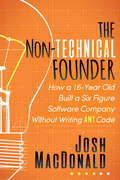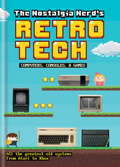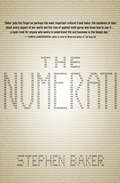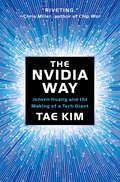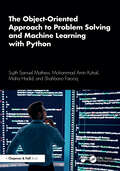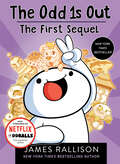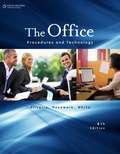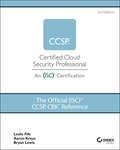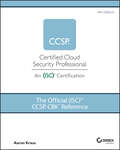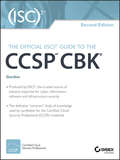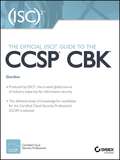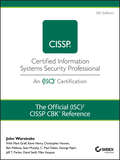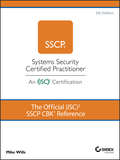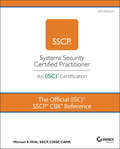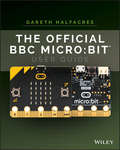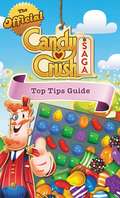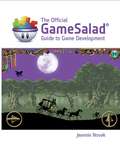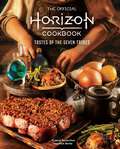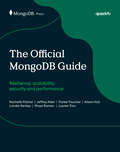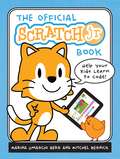- Table View
- List View
The Non-Technical Founder: How a 16-Year Old Built a Six Figure Software Company Without Writing Any Code
by Josh MacDonaldEveryone has an idea that they think is the next big thing. The problem is, it&’s probably an app or software idea and most people probably don&’t know how to code and their record for managing programmers is little to none. Even if they do know how to code, they&’re not quite sure how to get their first one thousand customers. The Non-Technical Founder walks readers through the stages of validating whether their next big thing is good, bringing the idea to life, and getting those first customers.
The Nostalgia Nerd's Retro Tech: Computer, Consoles & Games (Tech Classics)
by Peter LeighRemember what a wild frontier the early days of home gaming were? Manufacturers releasing new consoles at a breakneck pace; developers creating games that kept us up all night, then going bankrupt the next day; and what self-respecting kid didn't beg their parents for an Atari or a Nintendo? This explosion of computers, consoles, and games was genuinely unlike anything the tech world has seen before or since.This thoroughly researched and geeky trip down memory lane pulls together the most entertaining stories from this dynamic era, and brings you the classic tech that should never be forgotten.
The Nostalgia Nerd's Retro Tech: Computer, Consoles, And Games (Tech Classics Ser.)
by Peter LeighRemember what a wild frontier the early days of home gaming were? Manufacturers releasing new consoles at a breakneck pace; developers creating games that kept us up all night, then going bankrupt the next day; and what self-respecting kid didn't beg their parents for an Atari or a Nintendo? This explosion of computers, consoles, and games was genuinely unlike anything the tech world has seen before or since.This thoroughly researched and geeky trip down memory lane pulls together the most entertaining stories from this dynamic era, and brings you the classic tech that should never be forgotten.
The Numerati: How They'll Get My Number And Yours
by Stephen BakerLearn how the crisis over digital privacy and manipulation evolved in this &“utterly fascinating&” look at the growth of data mining and analysis (Seattle Post-Intelligencer). Award-winning journalist Stephen Baker traces the rise of the &“global math elite&”: computer scientists who invent ways to not only record our behavior, but also to predict and alter it. Nowadays, we don&’t need to be online to create a digital trail; we do it simply by driving through an automated tollbooth or shopping with a credit card. As massive amounts of information are collected, sifted, and analyzed, we all become targets of those who want to influence everything from what we buy to how we vote. Clear and &“highly readable,&” The Numerati is a look at the origins of our present-day world, the possibilities of the future, and those who—whether with good or bad intentions—profile us as workers, consumers, citizens, or potential terrorists (The Wall Street Journal).
The Nvidia Way: Jensen Huang and the Making of a Tech Giant
by Tae Kim"The definitive look at the most remarkable business story of this era." —Morgan Housel, New York Times best-selling author of The Psychology of Money and Same As Ever "The Nvidia Way is a riveting history of Nvidia’s unexpected ascent to the top of the tech sector—and a compelling case for why cofounder Jensen Huang is one of history’s great CEOs." —Chris Miller, New York Times best-selling author of Chip War: The Fight for the World’s Most Critical Technology A deeply reported business history of the chip-designer Nvidia—from its founding in 1993 to its recent emergence as one of the most valuable corporations in the world—explaining how the company’s culture, overseen by cofounder and CEO Jensen Huang, has powered its incredible success. Nvidia is the darling of the age of artificial intelligence: its chips are powering the generative-AI revolution, and demand is insatiable. For all the current interest and attention, however, Nvidia is not of our time. Founded more than three decades ago in a Denny’s in East San Jose, for years it was known primarily in the then-niche world of computer gaming. In fact, the company’s leather-jacketed leader, Jensen Huang, is the longest-serving CEO in an industry marked by near constant turmoil and failure. In The Nvidia Way, acclaimed tech writer Tae Kim draws on more than one hundred interviews—including Jensen (as he is known) and his cofounders, the two original venture capital investors, early former employees, and current senior executives—to show how Nvidia played the longest of long games, repeatedly creating new markets and outmaneuvering competitors, including the original semiconductor giant, Intel, which now finds itself well behind the upstart. Kim offers revelations at every step, among them: An authoritative, myth-busting account of Nvidia’s founding in 1993. How Nvidia managed to overcome early missteps that would have killed most start-ups. The benefits of Nvidia’s flat organizational structure, which allows even low-level employees to contribute to the direction of the company. How Jensen’s obsession with solving the Innovator’s Dilemma—the problem of an entrenched market leader falling to smaller, nimbler companies—drove him to reinvent his approach to corporate strategy. How Nvidia saw the coming AI wave sooner than anyone else, and how it bet its future on a technology that had not yet arrived. A rare view into Nvidia’s distinct culture and Jensen’s management principles, The Nvidia Way is a book for our moment as well as an instant classic of business history, with enduring lessons for entrepreneurs and managers alike.
The Object Primer
by Scott W. AmblerScott Ambler, award-winning author of Building Object Applications that Work, Process Patterns, and More Process Patterns, has revised his acclaimed first book, The Object Primer. Long prized in its original edition by both students and professionals as the best introduction to object-oriented technology, this book is now completely up-to-date, with all modeling notation rewritten in the just-released UML 2. 0. All chapters have been revised to take advantage of Agile Modeling (AM), which is presented in the new chapter 2 along with other important new modeling techniques. Review questions at the end of each chapter allow readers to test their newly acquired knowledge. In addition, the author takes time to reflect on the lessons learned over the past few years by discussing the proven benefits and drawbacks of the technology. This is the perfect book for any software development professional or student seeking an introduction to the concepts and terminology of object technology.
The Object-Oriented Approach to Problem Solving and Machine Learning with Python
by Mohammad Amin Kuhail Sujith Samuel Mathew Maha Hadid Shahbano FarooqThis book is a comprehensive guide suitable for beginners and experienced developers alike. It teaches readers how to master object-oriented programming (OOP) with Python and use it in real-world applications.Start by solidifying your OOP foundation with clear explanations of core concepts such as use cases and class diagrams. This book goes beyond theory as you get practical examples with well-documented source code available in the book and on GitHub.This book doesn’t stop at the basics. Explore how OOP empowers fields such as data persistence, graphical user interfaces (GUIs), machine learning, and data science, including social media analysis. Learn about machine learning algorithms for classification, regression, and unsupervised learning, putting you at the forefront of AI innovation.Each chapter is designed for hands-on learning. You’ll solidify your understanding with case studies, exercises, and projects that apply your newfound knowledge to real-world scenarios. The progressive structure ensures mastery, with each chapter building on the previous one, reinforced by exercises and projects.Numerous code examples and access to the source code enhance your learning experience. This book is your one-stop shop for mastering OOP with Python and venturing into the exciting world of machine learning and data science.
The Odd 1s Out: The First Sequel
by James RallisonThe sequel to the New York Times bestselling The Odd 1s Out, with all new and never-before-seen content featuring opinions, stories, and signature characters from YouTube phenomenon James RallisonJames Rallison has always felt like he was on the outside looking in. His YouTube videos are all about his "odd" behavior, and with over 13 million subscribers and millions more followers on social media, these animations have found their way into the hearts of fans who also feel like a bit of an odd one.In this second installment in the Odd 1s Out series, James is back with characters, stories, and opinions, including: • The upside of the robot uprising • Questionable pizza toppings • Strange yet completely reasonable fears • Inventions that don't exist, but shouldOffering advice on accepting your quirks and growing up in the Internet age, The Odd 1s Out: The First Sequel is sure to be a must-have for old and new fans alike.
The Offensive Internet: Speech, Privacy, and Reputation
by Martha Craven NussbaumThe Internet has been romanticized as a zone of freedom. The alluring combination of sophisticated technology with low barriers to entry and instantaneous outreach to millions of users has mesmerized libertarians and communitarians alike. Lawmakers have joined the celebration, passing the Communications Decency Act, which enables Internet Service Providers to allow unregulated discourse without danger of liability, all in the name of enhancing freedom of speech. But an unregulated Internet is a breeding ground for offensive conduct. At last we have a book that begins to focus on abuses made possible by anonymity, freedom from liability, and lack of oversight. The distinguished scholars assembled in this volume, drawn from law and philosophy, connect the absence of legal oversight with harassment and discrimination. Questioning the simplistic notion that abusive speech and mobocracy are the inevitable outcomes of new technology, they argue that current misuse is the outgrowth of social, technological, and legal choices. Seeing this clearly will help us to be better informed about our options. In a field still dominated by a frontier perspective, this book has the potential to be a real game changer. Armed with example after example of harassment in Internet chat rooms and forums, the authors detail some of the vile and hateful speech that the current combination of law and technology has bred. The facts are then treated to analysis and policy prescriptions. Read this book and you will never again see the Internet through rose-colored glasses.
The Office Specialist
by The Office Specialist.com staffA workbook designed for middle and high school computer applications students who require Microsoft Office Software applications and its curriculum.
The Office: Procedures and Technology
by William R. Pasewark Bonnie R. White Mary Ellen OliverioTHE OFFICE is a comprehensive text for courses in the high school office technology curriculum. The course name can be Office Procedures, Administrative Procedures, Business and Computer Technology, etc. The target market is high school student preparing for entry-level position in an office setting. The text focuses on the necessary skills that range from using email and the Internet to the use of integrated application and office suites. It covers the soft skills including customer satisfaction ethics, and telephone manners along with information systems and the global marketplace.
The Official (ISC)2 CCSP CBK Reference
by Leslie Fife Aaron Kraus Bryan LewisThe only official body of knowledge for CCSP—the most popular cloud security credential—fully revised and updated. Certified Cloud Security Professional (CCSP) certification validates the advanced technical skills needed to design, manage, and secure data, applications, and infrastructure in the cloud. This highly sought-after global credential has been updated with revised objectives. The new third edition of The Official (ISC)2 Guide to the CCSP CBK is the authoritative, vendor-neutral common body of knowledge for cloud security professionals. This comprehensive resource provides cloud security professionals with an indispensable working reference to each of the six CCSP domains: Cloud Concepts, Architecture, and Design; Cloud Data Security; Cloud Platform and Infrastructure Security; Cloud Application Security; Cloud Security Operations; and Legal, Risk, and Compliance. Detailed, in-depth chapters contain the accurate information required to prepare for and achieve CCSP certification. Every essential area of cloud security is covered, including implementation, architecture, operations, controls, and immediate and long-term responses. Developed by (ISC)2, the world leader in professional cybersecurity certification and training, this indispensable guide: Covers the six CCSP domains and over 150 detailed objectives Provides guidance on real-world best practices and techniques Includes illustrated examples, tables, diagrams and sample questions The Official (ISC)2 Guide to the CCSP CBK is a vital ongoing resource for IT and information security leaders responsible for applying best practices to cloud security architecture, design, operations and service orchestration.
The Official (ISC)2 CCSP CBK Reference
by Aaron KrausThe only official body of knowledge for CCSP—the most popular cloud security credential—fully revised and updated. Certified Cloud Security Professional (CCSP) certification validates the advanced technical skills needed to design, manage, and secure data, applications, and infrastructure in the cloud. This highly sought-after global credential has been updated with revised objectives. The new third edition of The Official (ISC)2 Guide to the CCSP CBK is the authoritative, vendor-neutral common body of knowledge for cloud security professionals. This comprehensive resource provides cloud security professionals with an indispensable working reference to each of the six CCSP domains: Cloud Concepts, Architecture and Design; Cloud Data Security; Cloud Platform and Infrastructure Security; Cloud Application Security; Cloud Security Operations; and Legal, Risk and Compliance. Detailed, in-depth chapters contain the accurate information required to prepare for and achieve CCSP certification. Every essential area of cloud security is covered, including implementation, architecture, operations, controls, and immediate and long-term responses. Developed by (ISC)2, the world leader in professional cybersecurity certification and training, this indispensable guide: Covers the six CCSP domains and over 150 detailed objectives Provides guidance on real-world best practices and techniques Includes illustrated examples, tables, and diagrams The Official (ISC)2 Guide to the CCSP CBK is a vital ongoing resource for IT and information security leaders responsible for applying best practices to cloud security architecture, design, operations and service orchestration.
The Official (ISC)2 CISSP CBK Reference
by Aaron Kraus Arthur J. DeaneThe only official, comprehensive reference guide to the CISSP Thoroughly updated for 2021 and beyond, this is the authoritative common body of knowledge (CBK) from (ISC)2 for information security professionals charged with designing, engineering, implementing, and managing the overall information security program to protect organizations from increasingly sophisticated attacks. Vendor neutral and backed by (ISC)2, the CISSP credential meets the stringent requirements of ISO/IEC Standard 17024. This CBK covers the current eight domains of CISSP with the necessary depth to apply them to the daily practice of information security. Revised and updated by a team of subject matter experts, this comprehensive reference covers all of the more than 300 CISSP objectives and sub-objectives in a structured format with: Common and good practices for each objective Common vocabulary and definitions References to widely accepted computing standards Highlights of successful approaches through case studies Whether you've earned your CISSP credential or are looking for a valuable resource to help advance your security career, this comprehensive guide offers everything you need to apply the knowledge of the most recognized body of influence in information security.
The Official (ISC)2 Guide to the CCSP CBK
by Adam GordonGlobally recognized and backed by the Cloud Security Alliance (CSA) and the (ISC)2 the CCSP credential is the ideal way to match marketability and credibility to your cloud security skill set. The Official (ISC)2 Guide to the CCSPSM CBK Second Edition is your ticket for expert insight through the 6 CCSP domains. You will find step-by-step guidance through real-life scenarios, illustrated examples, tables, best practices, and more. This Second Edition features clearer diagrams as well as refined explanations based on extensive expert feedback. Sample questions help you reinforce what you have learned and prepare smarter. Numerous illustrated examples and tables are included to demonstrate concepts, frameworks and real-life scenarios. The book offers step-by-step guidance through each of CCSP’s domains, including best practices and techniques used by the world's most experienced practitioners. Developed by (ISC)², endorsed by the Cloud Security Alliance® (CSA) and compiled and reviewed by cloud security experts across the world, this book brings together a global, thorough perspective. The Official (ISC)² Guide to the CCSP CBK should be utilized as your fundamental study tool in preparation for the CCSP exam and provides a comprehensive reference that will serve you for years to come.
The Official (ISC)2 Guide to the CCSP CBK
by GordonGlobally recognized and backed by the Cloud Security Alliance (CSA) and the (ISC)2 the CCSP credential is the ideal way to match marketability and credibility to your cloud security skill set. The" Official (ISC)2(R) Guide to the CCSPSM CBK(R) "is your ticket for expert insight through the 6 CCSP domains. You will find step-by-step guidance through real-life scenarios, illustrated examples, tables, best practices, and more. Sample questions help you reinforce what you have learned and prepare smarter. Easy-to-follow content guides you through - Major topics and subtopics within the 6 domains- Detailed description of exam format- Exam registration and administration policiesReviewed by cloud security experts, and developed by (ISC)2, this is your study guide to fully preparing for the CCSP and reaffirming your unique cloud security skills. Get ready for the next step in your career with "Official (ISC)2 Guide to the CCSP CBK". " "
The Official (ISC)2 Guide to the CISSP CBK Reference
by John WarsinskeThe only official, comprehensive reference guide to the CISSP All new for 2019 and beyond, this is the authoritative common body of knowledge (CBK) from (ISC)2 for information security professionals charged with designing, engineering, implementing, and managing the overall information security program to protect organizations from increasingly sophisticated attacks. Vendor neutral and backed by (ISC)2, the CISSP credential meets the stringent requirements of ISO/IEC Standard 17024. This CBK covers the new eight domains of CISSP with the necessary depth to apply them to the daily practice of information security. Written by a team of subject matter experts, this comprehensive reference covers all of the more than 300 CISSP objectives and sub-objectives in a structured format with: • Common and good practices for each objective • Common vocabulary and definitions • References to widely accepted computing standards • Highlights of successful approaches through case studies Whether you've earned your CISSP credential or are looking for a valuable resource to help advance your security career, this comprehensive guide offers everything you need to apply the knowledge of the most recognized body of influence in information security.
The Official (ISC)2 SSCP CBK Reference
by Mike WillsThe only official body of knowledge for SSCP—(ISC)2’s popular credential for hands-on security professionals—fully revised and updated. Systems Security Certified Practitioner (SSCP) is an elite, hands-on cybersecurity certification that validates the technical skills to implement, monitor, and administer IT infrastructure using information security policies and procedures. SSCP certification—fully compliant with U.S. Department of Defense Directive 8140 and 8570 requirements—is valued throughout the IT security industry. The Official (ISC)2 SSCP CBK Reference is the only official Common Body of Knowledge (CBK) available for SSCP-level practitioners, exclusively from (ISC)2, the global leader in cybersecurity certification and training. This authoritative volume contains essential knowledge practitioners require on a regular basis. Accurate, up-to-date chapters provide in-depth coverage of the seven SSCP domains: Access Controls; Security Operations and Administration; Risk Identification, Monitoring and Analysis; Incident Response and Recovery; Cryptography; Network and Communications Security; and Systems and Application Security. Designed to serve as a reference for information security professionals throughout their careers, this indispensable (ISC)2guide: Provides comprehensive coverage of the latest domains and objectives of the SSCP Helps better secure critical assets in their organizations Serves as a complement to the SSCP Study Guide for certification candidates The Official (ISC)2 SSCP CBK Reference is an essential resource for SSCP-level professionals, SSCP candidates and other practitioners involved in cybersecurity.
The Official (ISC)2 SSCP CBK Reference
by Mike WillsThe only official body of knowledge for SSCP—(ISC)2’s popular credential for hands-on security professionals—fully revised and updated 2021 SSCP Exam Outline. Systems Security Certified Practitioner (SSCP) is an elite, hands-on cybersecurity certification that validates the technical skills to implement, monitor, and administer IT infrastructure using information security policies and procedures. SSCP certification—fully compliant with U.S. Department of Defense Directive 8140 and 8570 requirements—is valued throughout the IT security industry. The Official (ISC)2 SSCP CBK Reference is the only official Common Body of Knowledge (CBK) available for SSCP-level practitioners, exclusively from (ISC)2, the global leader in cybersecurity certification and training. This authoritative volume contains essential knowledge practitioners require on a regular basis. Accurate, up-to-date chapters provide in-depth coverage of the seven SSCP domains: Security Operations and Administration; Access Controls; Risk Identification, Monitoring and Analysis; Incident Response and Recovery; Cryptography; Network and Communications Security; and Systems and Application Security. Designed to serve as a reference for information security professionals throughout their careers, this indispensable (ISC)2 guide: Provides comprehensive coverage of the latest domains and objectives of the SSCP Helps better secure critical assets in their organizations Serves as a complement to the SSCP Study Guide for certification candidates The Official (ISC)2 SSCP CBK Reference is an essential resource for SSCP-level professionals, SSCP candidates and other practitioners involved in cybersecurity.
The Official BBC Micro: User Guide
by Gareth HalfacreeThe go-to guide to getting started with the BBC micro:bit and exploring all of its amazing capabilities. The BBC micro:bit is a pocket-sized electronic development platform built with education in mind. It was developed by the BBC in partnership with major tech companies, communities, and educational organizations to provide kids with a fun, easy, inexpensive way to develop their digital skills. With it, kids (and grownups) can learn basic programming and coding while having fun making virtual pets, developing games, and a whole lot more. Written by internationally bestselling tech author Gareth Halfacree and endorsed by the Micro:bit Foundation, The Official BBC micro:bit User Guide contains what you need to know to get up and running fast with the BBC micro:bit. Learn everything from taking your first steps with the BBC micro:bit to writing your own programs. You'll also learn how to expand its capabilities with add-ons through easy-to-follow, step-by-step instructions. · Set up your BBC micro:bit and develop your digital skills · Write code in JavaScript Blocks, JavaScript, and Python · Discover the BBC micro:bit’s built-in sensors · Connect the BBC micro:bit to a Raspberry Pi to extend its capabilities · Build your own circuits and create hardware The Official BBC micro:bit User Guide is your go-to source for learning all the secrets of the BBC micro:bit. Whether you're just beginning or have some experience, this book allows you to dive right in and experience everything the BBC micro:bit has to offer.
The Official Candy Crush Saga Top Tips Guide
by Candy CrushThe FIRST OFFICIAL gamers' guide from the team behind CANDY CRUSH SAGA. For anyone that has ever jumped for joy after clearing that tricky level, battled the bothersome Chocolate, or done a happy-dance when they created a Color Bomb; this is the guide for you.This comprehensive insiders guide offers readers an in-depth insight into the Candy Kingdom and Dreamworld, including mastering the mechanics of the game, plus exclusive tips and strategies for clearing the most challenging levels. It's Delicious!
The Official GameSalad® Guide to Game Development
by Jeannie NovakTHE OFFICIAL GAMESALAD GUIDE TO GAME DEVELOPMENT teaches readers how to make their own games with the simple, powerful, drag-and-drop GameSalad Creator software. Using techniques based on key game development concepts, current trends, and established best practices, readers will be able to use GameSalad Creator from concept to prototype--and beyond. The text's wide-ranging coverage encompasses desktop, mobile, online, social, and serious games--as well as key platforms such as iOS, Android, Mac, Windows, and HTML 5. This reader-friendly, highly visual guide is equally suited for formal game development courses and self-paced learning--with a balance of depth and detail that is ideal for both professionals and those working on their first game. Basic tutorials and terminology are available in the book's Appendix. GameSalad has also provided manuals, templates, and a Cookbook containing video tutorials at http://gamesalad. com/manuals and http://cookbook. gamesalad. com.
The Official Horizon Cookbook: Tastes of the Seven Tribes (Gaming)
by Rick Barba Victoria RosenthalTake a break from machine-hunting in the wilds, and make the most delicious food of the 31st century, inspired by the post-apocalyptic world of Horizon!You&’ve explored the wicked heat of the Sun Furrows, the icy peaks of the Longroam, and the vast, deadly wilds of the Forbidden West. These locales are filled with danger, but are also rich with enough unique cuisines and flavorful foods to prepare a feast fit for a Sun-King! Now you can cook more than 60 of these delicious meals with Horizon: The Official Cookbook. From spicy Fireclaw stew to mouth-watering Bitterbrew Boar, there&’s a dish for everyone in this cookbook. Don&’t worry about getting lost in the wilds, because your recipes come with expert insight into the world, the people, and the culinary arts of the 31st century. ENTICING NEW LORE: As you explore the delicacies of Horizon&’s many tribes, you&’ll be guided on a journey across Aloy&’s world through the eyes of the Forbidden West&’s beloved cooks Milduf and Pentalla, written together with Guerrilla&’s Narrative team. 60+ DELICIOUS RECIPES: From delectable appetizers to epic entrees, icy refreshments to stomach-warming sides, this cookbook has a recipe for every kind of adventure. STUNNING PHOTOGRAPHY: Beautiful photos bring the dishes of Horizon to life, inspiring experienced chefs and new adventurers alike FIRST EVER OFFICIAL HORIZON COOKBOOK: Adventure into the wilds and explore the delicacies of this delicious and dangerous world
The Official MongoDB Guide: Resilience, scalability, security and performance
by Jeffrey Allen Maya Raman Rachelle Palmer Parker Faucher Alison Huh Lander Kerbey Lauren TranThe official guide to MongoDB architecture, tools, and cloud features, written by leading MongoDB subject matter experts to help you build secure, scalable, high-performance applicationsKey FeaturesDesign resilient, secure solutions with high performance and scalabilityStreamline development with modern tooling, indexing, and AI-powered workflowsDeploy and optimize in the cloud using advanced MongoDB Atlas featuresPurchase of the print or Kindle book includes a free PDF eBookBook DescriptionDelivering secure, scalable, and high-performance applications is never easy, especially when systems must handle growth, protect sensitive data, and perform reliably under pressure. The Official MongoDB Guide addresses these challenges with guidance from MongoDB’s top subject matter experts, so you learn proven best practices directly from those who know the technology inside out. This book takes you from core concepts and architecture through to advanced techniques for data modeling, indexing, and query optimization, supported by real-world patterns that improve performance and resilience. It offers practical coverage of developer tooling, IDE integrations, and AI-assisted workflows that will help you work faster and more effectively. Security-focused chapters walk you through authentication, authorization, encryption, and compliance, while chapters dedicated to MongoDB Atlas showcase its robust security features and demonstrate how to deploy, scale, and leverage platform-native capabilities such as Atlas Search and Atlas Vector Search. By the end of this book, you’ll be able to design, build, and manage MongoDB applications with the confidence that comes from learning directly from the experts shaping the technology.What you will learnBuild secure, scalable, and high-performance applicationsDesign efficient data models and indexes for real workloadsWrite powerful queries to sort, filter, and project dataProtect applications with authentication and encryptionAccelerate coding with AI-powered and IDE-based toolsLaunch, scale, and manage MongoDB Atlas with confidenceUnlock advanced features like Atlas Search and Atlas Vector SearchApply proven techniques from MongoDB's own engineering leadersWho this book is forThis book is for developers, database professionals, architects, and platform teams who want to get the most out of MongoDB. Whether you’re building web apps, APIs, mobile services, or backend systems, the concepts covered here will help you structure data, improve performance, and deliver value to your users. No prior experience with MongoDB is required, but familiarity with databases and programming will be helpful.
The Official Scratch Jr. Book: Help Your Kids Learn to Code
by Mitchel Resnick Marina Umaschi BersScratchJr is a free, introductory computer programming language that runs on iPads, Android tablets, Amazon tablets, and Chromebooks. Inspired by Scratch, the wildly popular programming language used by millions of children worldwide, ScratchJr helps even younger kids create their own playful animations, interactive stories, and dynamic games.The Official ScratchJr Book is the perfect companion to this free app and makes coding easy and fun for all. Kids learn to program by connecting blocks of code to make characters move, jump, dance, and sing.Each chapter includes several activities that build on one another, culminating in a fun final project. These hands-on activities help kids develop computational-thinking, problem-solving, and design skills. In each activity, you’ll find:–Step-by-step, easy-to-follow directions–Ways to connect the activity with literacy and math concepts–Tips for grown-ups and teachers–Creative challenges to take the learning furtherBy the end of the book, kids will be ready for all sorts of new programming adventures!The ScratchJr app now supports English, Spanish, Catalan, Dutch, French, Italian, and Thai.
